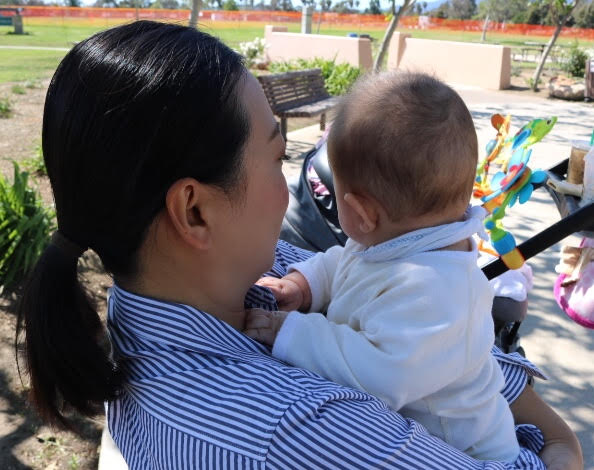Some of the 974,926 international students have the dream of staying in the U.S. after they complete their education. This is the story of one of them.
By KANAKO MIYAZAKI
EL NUEVO SOL
In the United States, there are people from all over the world who come for many different reasons and purposes. Education is one of the most common reasons for them to come to the country of immigrants. The population of international students in the U.S. has been increasing, and the Institute for International Education reported that there were 974,926 international students in the academic year 2014–2015. Some of these international students have a dream of staying in the U.S. after they complete their education.
Mai Saito (not her real name to protect her identify), a 34-year-old Japanese woman, is one of them. Saito came to the U.S. in 2007 when she was 25. She came for two reasons—she wanted to experience studying abroad and she wanted to move away from her strict mother. Saito said that she felt she could never satisfy her mother because of her extremely high expectations.
When Saito was 11 years, she and her mother moved to Tokyo, Japan, from Dalian, China, where she was born as her Chinese parents’ only daughter. After graduating from a Japanese university, she worked in the shipping industry for a few years. Then, at 25, she decided to come to the U.S. to pursue her dream to study abroad and be apart from her mother.

Mai Saito (not her real name) holds her daughter and talks to her at a park in Goleta, California, on May 5. Photo: Kanako Miyazaki.
For the first few months after arriving to the U.S. with her student visa, Saito went to an English school in Santa Barbara. Then, she studied International Business at Santa Barbara City College for three and a half years.
“I didn’t want to graduate because I wanted to stay longer at the college, but the tuition was too expensive,” Saito says.
After she earned her bachelor’s degree in International Business at the college, Saito applied for Optional Practical Training, which gives international students who complete their degree program a 12-month work experience period, related to their field of study. During that 12-month period, she worked as an administrative assistant at the language school she had attended.
Since Saito did not want to go back to Japan after the optional practical training period ended, she looked for a company that agreed to sponsor her for getting an H-1B visa, or a working visa. First, she asked the English school if they could be her sponsor, but the school declined her request. Then, she found a Japanese restaurant in Santa Barbara, California, that accepted to be her sponsor to emply her as a logistic manager.
Saito says, however, that the restaurant owner agreed to only signing her H-1B visa application documents as her sponsor, but did not agree to paying the application fee. This, despite the fact that sponsoring employers must pay this fee, according to Patricia Marquez, assistant director at the International and Exchange Student Center of California State University Northridge (CSUN). Saito ended up paying approximately $5,000 to $6,000, including the application fee and attorney’s fee, all by herself.
Because her I-20 form, a certificate of eligibility for nonimmigrant student status that Santa Barbara City College issued, and her international student visa were about to expire after the optional practical training period ended, Saito needed to find a way to stay in the U.S. legally while she was in the process of getting H-1B visa. She decided to take risks.
She enrolled in a school and got an I-20 form from there. However, she was not able to afford a public college or university’s tuition because that was extremely expensive for international students. When she tried to find a cheaper tuition school, a friend introduced her to an agent who connected international students and schools.
Saito paid $7,600 to the agent to be enrolled for one year in a school managed by a Christian church in Koreatown in Los Angeles. The school issued official documents for her, such as the I-20 form, but did not require her to take any classes, so she could work under the table at the Japanese restaurant willing to sponsor her for seven days a week instead of going to school.
Saito says she is not sure whether the school really existed or it was just a ghost school because she has never been there.
During the next year and a half, Saito changed to another school located in Compton, California, where she was also issued official documents to maintain her student visa status, with only requiring her to come to the school at least two times every month, do homework, and take tests. She paid $3,800 to the agent to get enrolled in the school for the first half a year, but then she knew that the school tuition was $1,000 for a year and noticed that she had been overcharged by the agent. Therefore, when she was told by this agent to pay more money for renewing her contract with the school, she decided to cut the connection with that agent and successfully negotiated with the school by herself.
Saito says that these schools generally never talk to students directly about their contract because they are really cautious about being caught by the authorities, so they always use an agent as a third party to make a contract with the student.
“Since I was a good student who did everything that the school told me to do, and my attendance was good too, so I could talk with a school person in person about renewing my contract,” says Saito. “It was a win-win situation because I just paid the $200 renewal fee and gave a gift card to the school person, and I could save a lot of money.”
According to Marquez, international students must be full-time students or take at least 12 units to maintain their F-1 student visa status, unless they have exceptional reasons, such as medical problems. Additionally, all the schools with F-1 student visa programs are required to report the updated information of their international students to the federal government constantly.
Marquez also said that international students are basically allowed to work and earn money only on campus, so they must not work outside of their school except in cases authorized by the government. Therefore, Saito was not legally allowed to work at the Japanese restaurant while she was enrolled in other schools as an international student.
At the end of 2014, Saito received a letter from the U.S. Department of Homeland Security and learned that her work visa was officially refused because her logistic manager position at the Japanese restaurant was not special enough to qualify. It took more than two years for this process. It has come to nothing after all the time and money she spent, the risks she took, and the efforts she made. Then, she decided to leave the restaurant.
“I cannot say anything about whether my restaurant owner might have known that my position was not good enough to be approved,” says Saito. “The owner ended up telling me that marrying a U.S. citizen is the easiest and best way to get the permanent resident card.”
Meanwhile, since the summer of 2013, Saito had been dating her American boyfriend, born and raised in Santa Barbara, California. As time went by, their relationship became more and more serious, and they got married in February 2015, before her I-20 document issued by the school in Compton was about to expire. Consequently, she could apply for a Green Card.
At the end of 2015, Saito delivered their first baby at a hospital in Santa Barbara, by emergency cesarean section more than 30 hours after her water had broken. She became unconscious on the operating room bed for more than three and half hours before she could hear her daughter’s first cry. Today, her daughter, who she gave birth to at the risk of her life, is her reason to live.
“Through the pregnancy and unexpected difficult birth, I have faced a lot of difficulties because of the differences between Asian and Western cultures, and it was very hard for me,” says Saito. “Sometimes, my husband could not understand what I really want or mean because of the cultural differences and language barrier, so I felt the difficulty of our intercultural marriage.”
Now, Saito’s dream is to go back to work again when her daughter turns one-year-old, hopefully for an international office of a college or university or a trading company where she could be helpful with her skills as a trilingual speaker.
Tags: International Students Kanako Miyazaki SANTA BARBARA Tokyo











